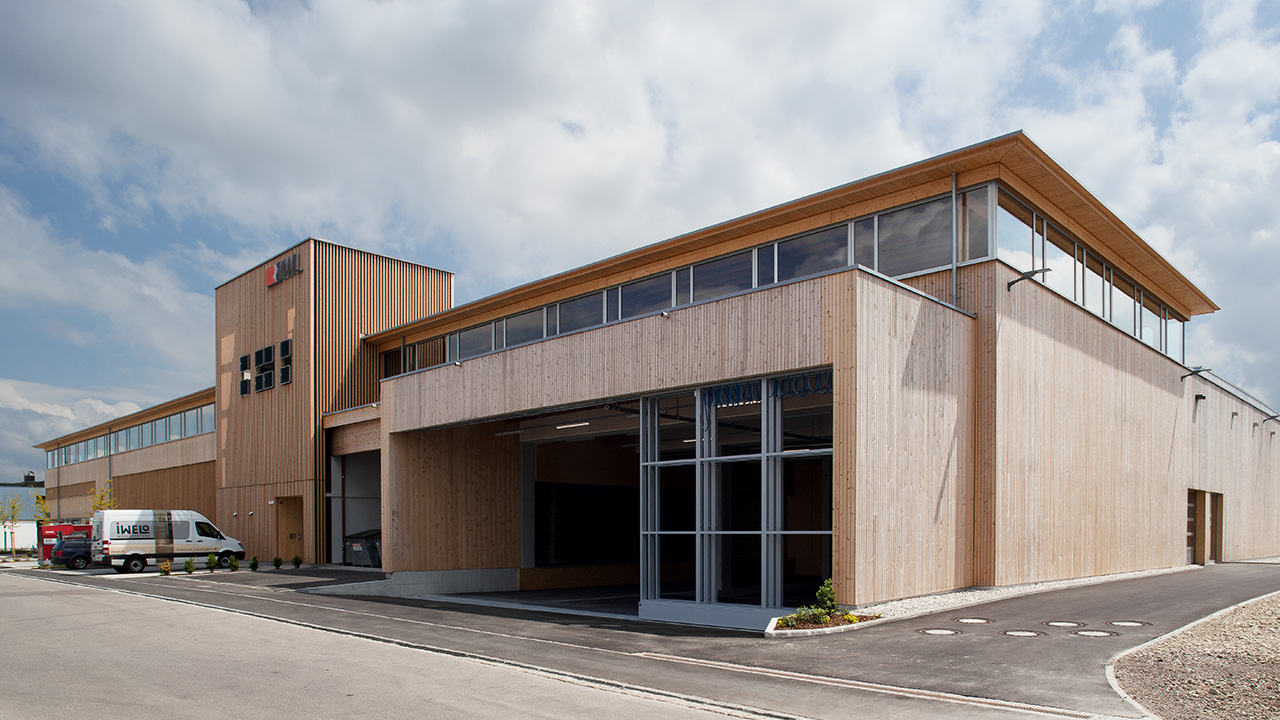Berlin, Germany
Administration Building Tierpark
about
Built in the 1960s, the Tierpark administration building was saved from demolition after a period of vacancy by a 2019 refurbishment of the building envelope. It now consists of prefabricated insulated timber panel elements that connect to the existing frame structure. The existing facade was scanned in 3D to enable the new facade elements to fit exactly. The new timber fassade is much lighter than the original sandwich elements thus avoiding the need for additional structural works. In the course of the renovation, the building services were also renewed, while the interior fittings from the period of construction were retained. The administration building stands as an example of resource-conserving refurbishment, which represents a sustainable, resource-conscious and economical alternative to demolition and new construction.
General
Architects:
unknown (1960ies), ZRS Architekten & Ingenieure (2017/19)
Specalist Planners:
ZRS Ingenieure, IGZ Ingenieurgesellschaft Zimmermann mbH, Zimmerei Sieveke, IBPM Gesellschaft für interdisziplinäres Bauprojektmanagment mbH
Location:
Am Tierpark 125, 10319 Berlin-Friedrichsfelde
Year Of INAUGURATION:
1960ies?
Intervention:
2017/19: renovation
Storeys:
3
Surface (m²):
3.345
Building costs (€/m²)
843
Legal Status:
public institution
Use:
office and administration
Typology:
freestanding
CONCEPT & Context
innovation:
minimalistic refurbishment instead of demolition
spacial configuration:
room configurations from the building period were retained
landscape:
suburban
CONSTRUCTION
construction:
concrete skeleton structure
envelope:
prefabricated wood panel elements
thermal insulation U-value (W/m²K):
0,24
special detail:
3D scan as base for prefabricated facade elements
operation
heating system:
local heat network
cooling system:
no cooling system
sun protection:
automatically controlled external sun protection
ventilation System:
natural ventilation
project map

Project Dossier
Download the project dossier as pdf in Din-A4 format. The pdf dossiers are available in english.
ZRS_Fassaden%20Ansicht%202(1).jpg)
ZRS_Au%C3%9Fenperspektive%204(1).png)
ZRS_Innenraum%20Treppenhaus(1).png)
ZRS_Innenraum%20Besprechungsraum(1).png)
ZRS_im%20Bau%20Fassadenmodule(1).png)















